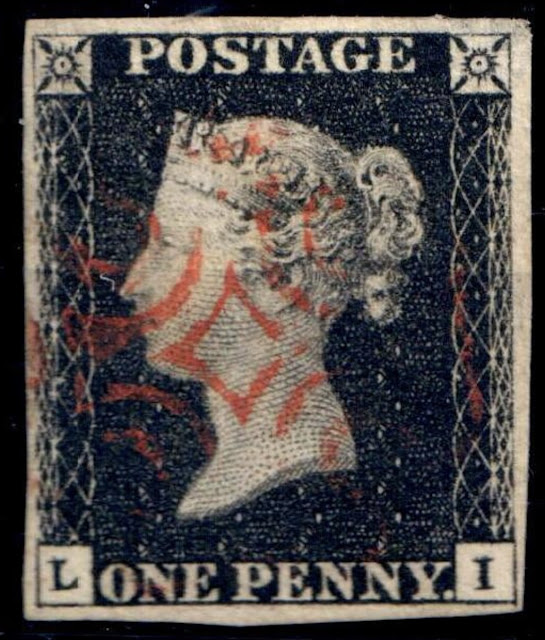World’s first postage stamp: Penny black
Introduced in Britain on 1st of May, 1840 ( and valid since 6th of May, 1840), Penny Black made mailing a letter much easier as the rate is same no matter the distance.
Before introduction of the stamp, the postal charge for a letter was borne by the recipient and the value was based on its weight and distance travelled. This made calculation of the charge difficult.
Design details
The stamp has a frame-like design, POSTAGE written at the top, and ONE PENNY. at the bottom.
The image is based on a sketch of Queen Victoria at the age of 15 years, with a background of ornament lathe work.
The top corners gave a design pattern resembling a sun, and the bottom corners have an alphabet each.
Special printing with V and R instead of the stars were also printed for use by government departments.
The alphabets would be from one of the 240 combinations:
AA, AB, …, AL
BA, BB, …, BL
…………………………………
SA, SB, …, SL
TA, TB, …, TL
The instructions along the margins of the sheet "Place the Labels ABOVE the Address and towards the RIGHT HAND SIDE of the Letter." are believed to be the reason for affixing stamps on the right hand corner of an envelope.
Price and Rarity
A significant number (68+ million) of Penny Blacks were printed for an year. More than a million are known to have survived until the modern day. A nice 4 margin copy with a clean strike of a Maltese Cross is easy to acquire.
While sheets of stamps were being printed, the printing plates needed to be replaced. A total of 12 plates (1a, 1b, 2, 3, …, 11) were used, and the Penny Blacks printed with the last plate (#11) are among the rarest of Penny Blacks.
One of the three Penny Blacks believed to have survived from the very first sheet of printed stamps was put for auction at $8 million. The other two are part of the collection at the British Postal Museum.
Used Penny Blacks sell in the $50 to $250 range, heavily dependent on how many margins are visible. Mint ones are obviously quite scarce, and certainly also heavily dependent on margins (and other factors like gum, faults, etc).
It is not a cheap stamp though, but surprisingly affordable for such a symbol.

Comments
Post a Comment